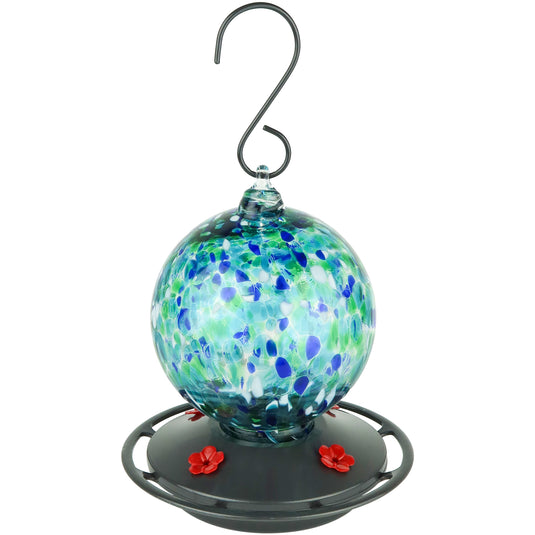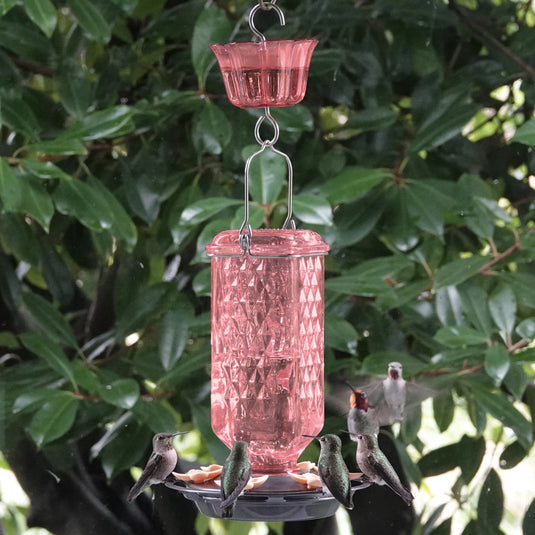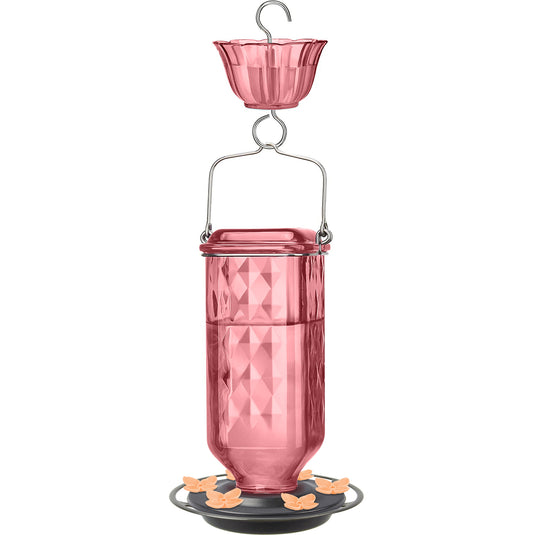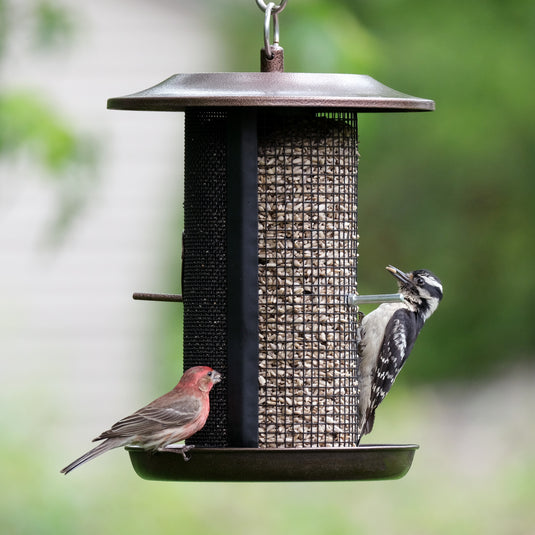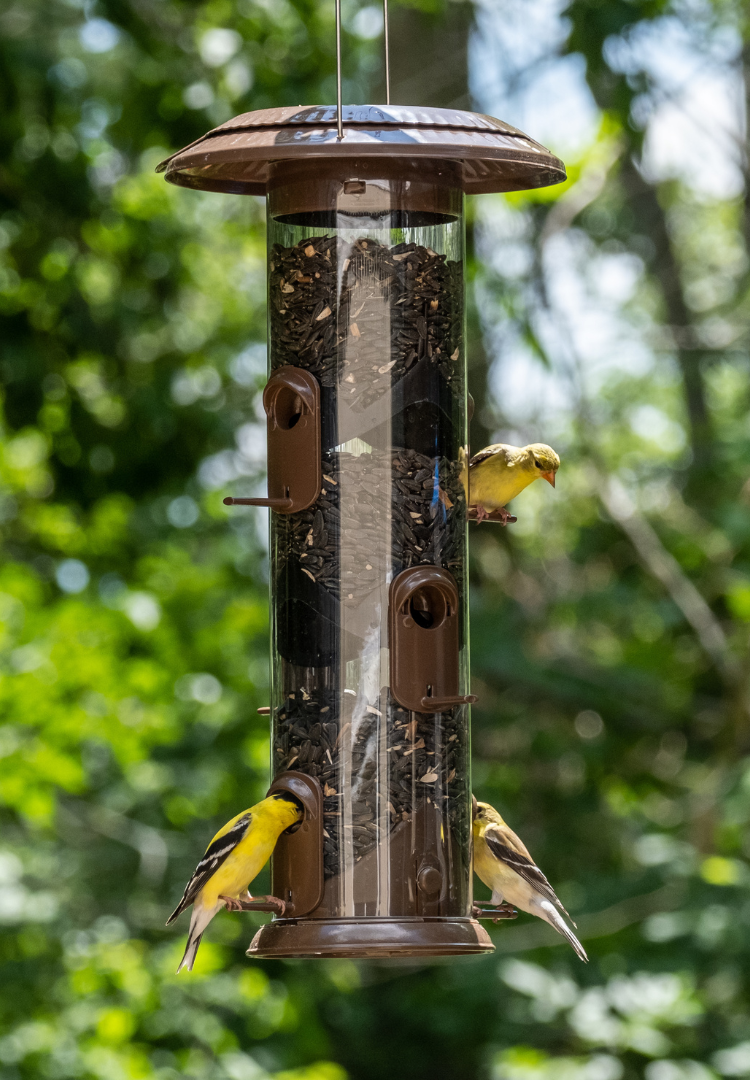Identifying Dark-eyed Juncos (Slate colored):
Ranging from 5.5 to 6.5 inches in length, this medium-sized sparrow has a rounded head with a short, stout bill and a prominent long tail. With the simplest coloring in the Junco family, the Slate-colored Dark-eyed Junco has dark gray covering the back, face, and chest with a white underside and outer tail feathers. A short pink bill brightens the face of this round bird.

Birds of the ground, Dark-eyed Juncos are typically seen hopping around the bases of shrubs and trees. They will often venture out onto lawns, especially beneath bird feeders, looking for fallen seeds.
Slate-colored Juncos have the widest habitat range. In summer, this range expands across most of Canada and Alaska, stretching south into the northeastern United States as far south as Georgia. In the winter months, the range shifts from southern Canada to the Gulf states, mostly east of the Rockies. Juncos are often found in coniferous forests but can be found in deciduous forests as well. In winter months they can be found in a wider variety of habitats, including open woodlands, parks, fields, and gardens since food sources become more scarce.
Attracting Dark-eyed Juncos to Your Feeder:
Dark-eyed Juncos mainly eat seeds, with buckwheat, sorrel, chickweed, and lamb's quarters making up around 75% of their diet. Studies show feeders only account for roughly a quarter of a wild bird's diet, so incorporating these plants into your landscape can go a long way in attracting these birds. At feeders, all Dark-eyed Juncos prefer millet, but will also consume sunflower seeds.
As Dark-eyed Juncos do prefer to spend most of their time foraging on the ground, if it is an option, spreading some seed directly on the ground or even simply allowing the ground below your regular feeders to accumulate small amounts of discarded seed can help to attract these birds to your yard. Tray feeders that allow for a wide open feeding area can also be successful in attracting these birds. Tray feeders (sometimes called platform feeders) can be hung from a traditional shepherd's hook or can also be mounted closer to the ground, although doing so may encourage squirrels and other wildlife.
Needing more energy and protein during breeding season, they will also expand their diets to include insects such as moths, butterflies, caterpillars, beetles, flies, wasps, and even ants. As always, we recommend limiting the use of broad-spectrum herbicides whenever possible to ensure these natural food sources are available.

Pictured: Dark-eyed Junco on Hanging Platform Feeder (Model# WWCF23)
Nesting:
Dark-eyed Juncos typically construct their nests in a depression on the ground or amid tangled roots. Occasionally juncos will nest above the ground on horizontal branches or in hanging ports or light fixtures, however it is much less common. After choosing a suitable site, the female uses her beak to weave nest materials together to frame her body. Materials used to construct the nest range from a fine lining of grass or pine needles to a more "typical" nest with twigs, leaves, moss, grass, and hair depending on the nest location; nests directly on the ground tend to have less materials included in the frame.
Nests measure anywhere from 3 to 5.5 inches across and 1.6 to 2.8 inches deep when completed, roughly 3-7 days after construction begins. Eggs are roughly 0.8 inch in length and 0.6 inch wide and color can range from white to gray or pale blue or green with a dusting of brown speckles. Eggs typically hatch after around 12 days of incubation and the young will fledge in an additional 10-13 days.
Pairs can have between 1-3 broods per year depending on weather and location. Each clutch typically consists of 3-6 eggs.
Similar species:
The Dark-eyed Junco has a vast range of geographic variation with a total of 15 described races. Of these, six forms are fairly easily recognizable in the field. Two widespread forms of the Dark-eyed Junco are that of the "slate-colored", found in the eastern Unites States and most of Canada and the "Oregon", found across a large portion of the western United States. The "Oregon" junco has the typical Junco build with a dark hood, brown back and rust flanks.

Share your Dark-eyed Junco stories with us below!







